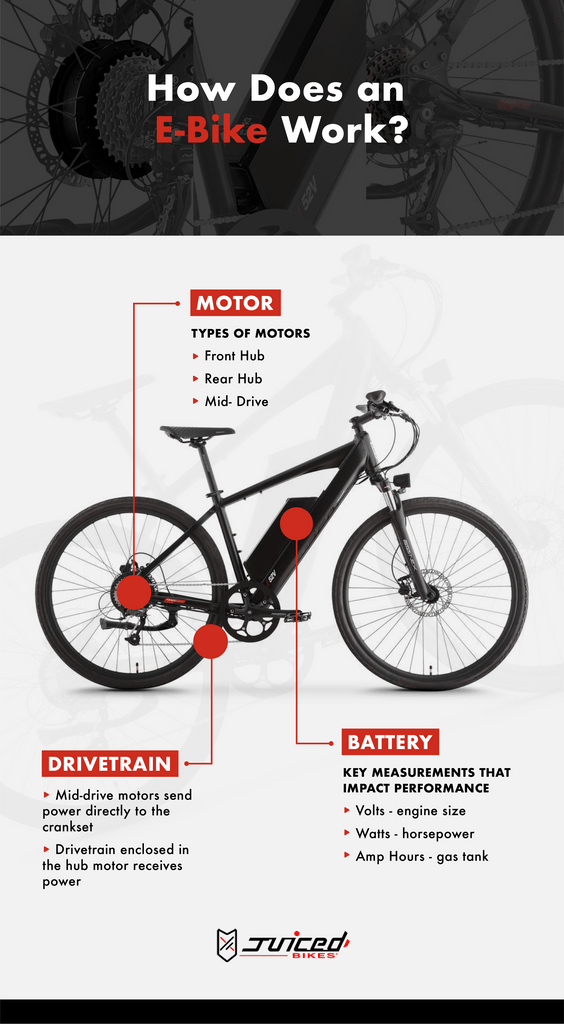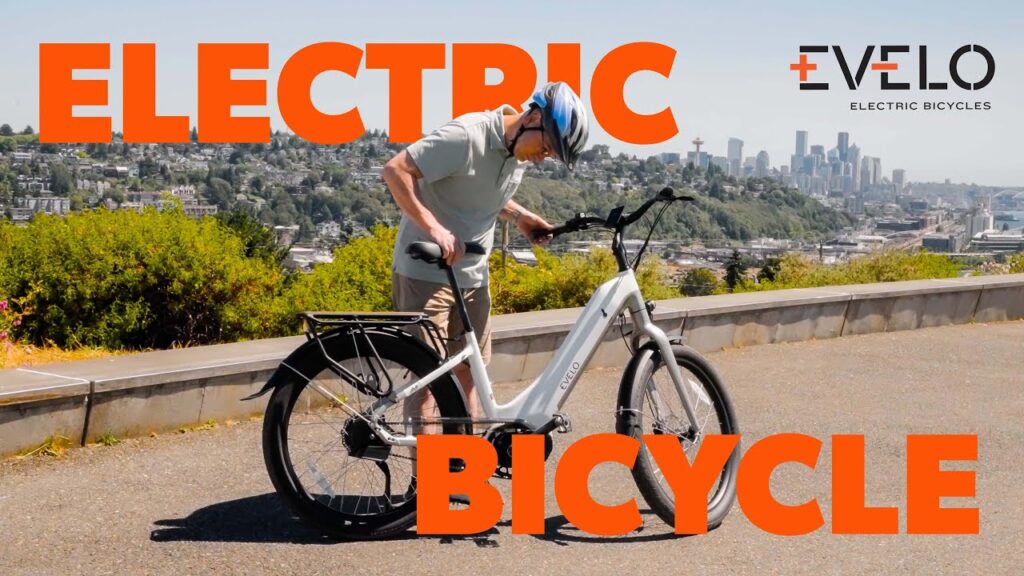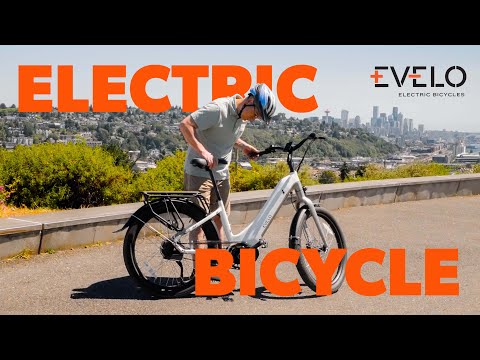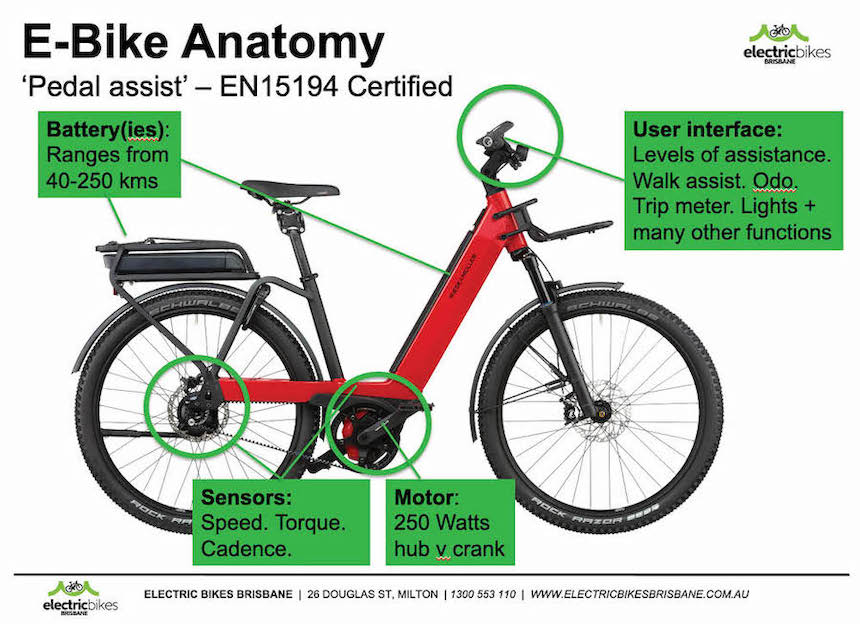Imagine the thrill of zipping down trails, exploring off-road terrains, or simply cruising through the city streets on your very own e-bike. In this engaging guide “How To Use An E-bike”, you’ll receive comprehensive insight into handling these innovative machines. Targeting especially beginners, it covers everything from the basics to off-road applications like trail riding and camping. So gear up to pedal further while experiencing lesser fatigue, as you journey into the world of e-bikes.
Understanding the Basics of an E-bike
E-bikes or electric bikes have revolutionized the cycling world with their remarkable features and improved convenience. If you’re new to them or considering getting one, then it’s worth understanding the basics.
Distinguishing the main components of an e-bike
An e-bike essentially consists of a few significant components that traditional bikes don’t have. Your bike comprises an electric motor that assists pedaling, a battery that supplies power to the motor, and a control panel or display that lets you handle the assistance level.
Differentiating between traditional bicycles and e-bikes
The primary difference between traditional bicycles and e-bikes is the built-in electric motor in e-bikes. This allows for assisted pedaling, easing the strain on your legs and making cycling less physically demanding. While traditional bicycles require human power, e-bike riders can choose to pedal normally, pedal with assistance, or sometimes, not pedal at all!
Exploring various types of e-bikes available in the market
Nowadays, there are several types of e-bikes in the market, including mountain e-bikes, road e-bikes, cargo e-bikes, and commuter e-bikes, each designed for distinct purposes. When selecting an e-bike, consider your needs, terrain, budget and the features you value.
Essential Gear for E-Bike Use
For a safe and enjoyable electric cycling experience, there are essential gear and accessories to consider.
Choosing the right helmet and safety equipment
Your primary safety measure is a high-quality helmet, designed to protect you from potential falls or collisions. Other safety equipment may include gloves, knee and elbow pads, and reflective clothing for visibility when riding at night.
Preparation of a practical toolkit for repairs
Like any bike, e-bikes need occasional fixing. Having a toolkit equipped with basics like a puncture repair kit, allen keys, tire levers, spare tubes, and a multitool can save the day. Also, include a mini pump to maintain optimal pressure in your tires.
Gear suitable for off-road and trail riding
For off-road and trail riding, consider gear like rugged shoes, multi-sport GPS watches, protective eye wear, and weather-specific clothing. Advanced biking gear can improve traction and treat you to a more comfortable ride.

This image is property of cdn.shopify.com.
Configuring Your E-Bike
E-bike configuration is crucial for its optimal performance and your riding comfort.
Setting an ideal seat height
Setting the right seat height impacts your comfort and the effectiveness of pedaling. When you sit on your saddle with a foot on a pedal in its lowest position, there should be a slight bend in your knee.
Adjusting the handlebars for optimal control
Handlebar height affects your control over the bike and the pressure on your wrists, back and neck. Aim for a position where your hands, elbow and shoulder form a straight line when grasping the handlebars.
Tuning the suspension for a smoother ride
Proper suspension setup improves your comfort, bike control and overall performance. The idea is to adjust the suspension’s firmness to best match your weight and riding style.
Battery management and maintenance tips
Preserving e-bike battery life is paramount. Store the battery in a cool and dry place, recharge it only when it’s near empty, and avoid letting it sit with zero charge for long.
Understanding Controls and Features
Familiarizing yourself with the controls and features of an e-bike is a significant step toward mastering your ride.
Learning about the throttle and pedal-assist systems
The throttle control provides a boost without needing to pedal, while the pedal-assist system offers a selectable level of aid when you are pedaling.
Getting familiarized with the e-bike’s control panel
The control panel serves as the command center of your e-bike. It primarily allows you to select the level of assistance you want and often offers information about battery life, speed, distance traveled and more.
Knowing when and how to use different e-bike features
Get acquainted with features like LED lights for nighttime riding and horns for traffic situations. Consider when it’s best to use pedal assistance or throttle, and how to switch between different modes.

This image is property of i.ytimg.com.
Mastering E-Bike Riding Technique
Just like anything else, mastering e-biking requires practice and time.
Improving balance and control
Improved balance and control translate into a smoother, safer ride. Practice riding at a moderate speed and turning without putting your foot down.
Practicing to ride at lower speeds
Starting with lower speeds helps in maintaining control and averts accidents. As you feel more comfortable and confident, you can gradually increase your speed.
Learning how to maneuver and handle the e-bike
Understanding your e-bike’s weight and how it responds to steering and braking is crucial. Ride in a safe, open space and practice turning, stopping, and starting until you feel comfortable.
Using E-Bikes for Off-Road and Trail Riding
Off-road and trail riding bring a taste of adventure and a different set of challenges.
Understanding the differences between on-road and off-road e-bike use
The major difference lies in the type of surface and terrain. Off-road and trail rides demand more technical skills and a different kind of e-bike optimized for unpaved surfaces.
Tips for off-road riding
Remember to lower your saddle for better control, look ahead on the trail, not down, and shift your weight accordingly when riding uphill or downhill.
Techniques for trail riding
Use your body to absorb shocks rather than relying solely on the bike suspension. Also, learn to keep your pedals parallel to the ground when not pedaling to prevent them from hitting rocks or roots.

This image is property of averagejoecyclist.com.
E-Bike Handling in Different Weather Conditions
Different weather conditions can significantly impact your e-biking experience.
Dealing with wet and rainy conditions
For wet conditions, fenders are essential to prevent water from splashing onto you. Use lights for visibility, and brake earlier than you do in dry conditions, as stopping distances are often longer on wet surfaces.
Handling your e-bike in windy situations
In windy conditions, lower your body closer to the bike to reduce wind resistance. Be keen on sudden gusts which can shift your bike off course.
Proper maintenance and care of e-bike during extreme climate conditions
Regardless of the weather, regular maintenance is vital. Keep your e-bike clean, especially the electrical components. If you’re storing it for an extended period, remove the battery and keep it charged.
Commonly Made E-bike Mistakes and Their Avoidance
To maximize your enjoyment and bike lifespan, avoid committing these common e-bike mistakes.
Ignoring regular maintenance
Regular e-bike maintenance ensures safe and efficient operation. At the very least, keep your bike clean, ensure the tires are properly inflated, and the brakes are functioning well.
Overlooking proper battery care
The e-bike battery demands meticulous care. Avoid extreme temperatures and charge the battery adequately. Regular use usually helps in keeping the battery in good condition.
Frequent braking errors
Avoid frequent hard braking as it can increase wear and tear on the brake pads. Also, practice using both front and rear brakes together for balanced, safe stopping.

This image is property of i.ytimg.com.
Using E-Bikes for Camping
E-bikes can make camping trips even more adventurous and enjoyable.
Packing essentials for an e-bike camping trip
When packing for a camping trip, consider necessary items like a tent, sleeping bag, cooking equipment, and an extra battery or charger for your e-bike. Pack smart and distribute the weight evenly across your e-bike.
Planning your route and campsites
Mapping out your route, considering terrain, and locating suitable campsites are crucial. Look for campsites with charging facilities for your e-bike’s battery.
Ensuring the safe look after of the e-bike during camping
Lock up your e-bike safely when not in use. Additionally, if you can, remove the battery and bring it into your tent at night.
Legalities and Rules for E-bike Use
As e-biker, it’s essential to be mindful of local laws and regulations.
Understanding the local laws and regulations around e-bike use
These vary by region, so familiarize yourself with the local regulations about where and how e-bikes can be used, and if you need a license, helmet, or insurance.
Staying aware of the places where e-bikes are permitted
Not all tracks and trails permit e-bikes. Always check the local trail rules or signs before starting your ride.
Educating oneself about the legal speed limit and other requirements
Generally, e-bikes’ speed is capped at certain limits mandated by law. Always obey the local speed limit and other rules to ensure safety for yourself and other road or trail users.
Whether you’re a beginner or an advanced cyclist, an e-bike is a versatile, fun and energy-efficient way to get outdoors. Here’s to happy, safe e-biking!

This image is property of cdn.shopify.com.
